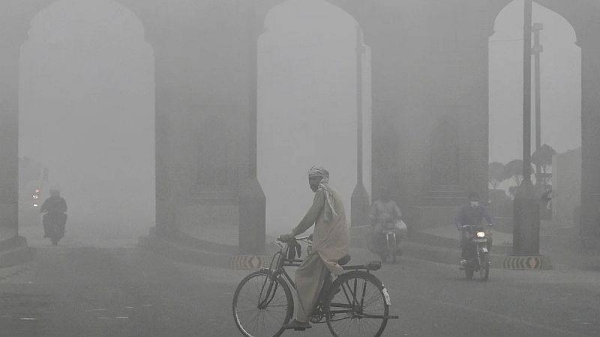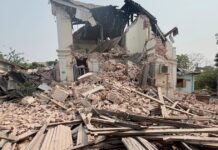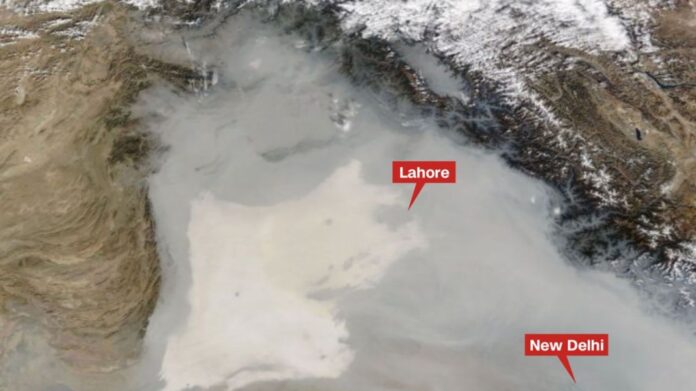As Pakistan grapples with their annual smog season, pollution levels have reached hazardous new highs, casting a thick, toxic haze over the region. This haze is now visible from space. NASA satellite images show a dense smog layer engulfing Pakistan’s Punjab province and extending into northern India. Lahore and Multan, among other cities, have recorded some of the highest pollution levels, with the Air Quality Index (AQI) soaring above 1,200, levels deemed severely hazardous.
Winter Traps Dangerous Pollutants
Smog has historically worsened in South Asia especially during winter, largely driven by agricultural burning, coal-fired plants, vehicular emissions, and stagnant weather. Colder, denser winter air traps pollutants close to the ground, creating an ominous, persistent yellow haze over urban centres. This year, officials are calling the situation unprecedented, with Lahore’s AQI reaching new records. The deadly pollutant PM2.5, small enough to penetrate lung tissue and enter the bloodstream, has been measured at over 110 times the World Health Organization’s safe limits in certain areas of Punjab.

Health facilities across Punjab are overwhelmed as respiratory and pollution-related ailments spike. Over 30,000 patients have already sought medical treatment in smog-hit regions for respiratory issues, eye irritations, and throat infections. Children under five are particularly vulnerable. UNICEF estimates that more than 11 million young children are exposed to the toxic air. “The well-being of young children is a major concern,” said UNICEF’s Abdullah Fadil, noting the developmental risks associated with inhaling polluted air at a young age.
Government Measures and Public Warnings
In response, authorities in Punjab have ordered widespread closures, including schools, parks, and outdoor venues, to protect public health. The restrictions now also extend to all outdoor activities, from sports events to restaurant dining. The Environmental Protection Agency has enforced an 8 PM closure for non-essential markets and shops, urging people to stay indoors as much as possible to limit exposure.

Experts are calling for “climate diplomacy” between India and Pakistan to address these shared environmental issues. However, climate change is expected to intensify extreme heat and disrupt wind and rainfall patterns. Pollution challenges are likely to persist and worsen in years to come. Both countries face an urgent need for coordinated, sustainable solutions to tackle the escalating air quality crisis, which endangers the health and lives of millions across the region.
Stay tuned to Brandsynario for the latest news and updates








































